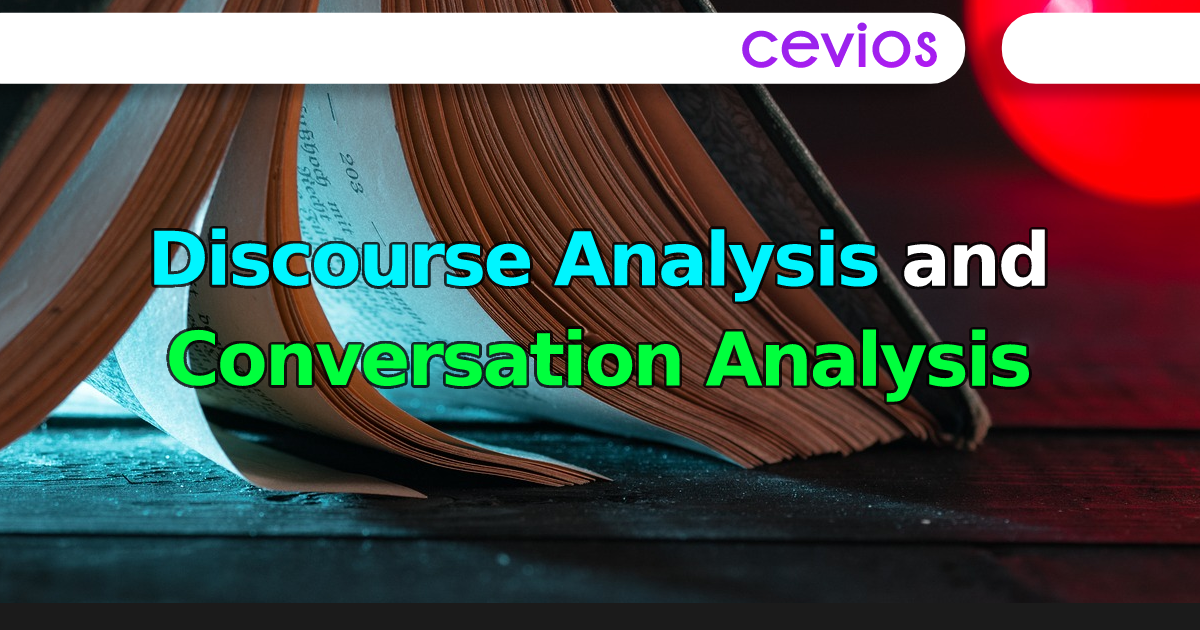Discourse Analysis and Conversation Analysis
Four core features of Discourse Analysis
The table above shows a variety of named discourse analytic methods, but I have reserved an entry for unadorned “discourse analysis”. That is useful for two reasons: it prompts us to ask what the core features are that makes something recognisable as discourse analysis, and reminds us that many scholars are happy to use just these features without committing themselves to one or other specific variant.
The four core features of any discourse analysis are these:
- the talk or text is to be naturally found (in the sense of not invented, as it might be in psycholinguistics, pragmatics or linguistic philosophy; some analysts admit interview data into this natural category, while others do not);
- the words are to be understood in their co-text at least, and their more distant context if doing so can be defended;
- the analyst is to be sensitive to the words’ non-literal meaning or force;
- the analyst is to reveal the social actions and consequences achieved by the words’ use – as enjoyed by those responsible for the words, and suffered by their addressees, or the world at large.
Before I give an account of some specific examples of discrete sorts of discourse analysis, it would be as well to recall that many social scientists find a serviceable use for what we might call ‘generic’ discourse analysis. This is work done without a strong commitment to the sorts of epistemologies and ontologies of the schools of analysis we shall see later on: it is a sort of working procedure, inspired by the four basic principle of discourse analysis, and brought off in bespoke ways to make sense of one particular topic or domain of experience. The method of choice in such work is often an inspection of textual material (e.g. news media reports) or interview transcripts (e.g. researchers’ interviews with informants chosen for their particular experiences). The author or speaker is not, however, taken to be a simple informant, reporting unvarnished facts; he or she is seen as producing (or reproducing) themes or representations (sometimes called ‘interpretative repertoires’, after the influential use made of the term, originating in Gilbert and Mulkay, 1984, by Potter and Wetherell, 1987). The job of the analyst is to sift carefully among the material to extract these themes or repertoires, and thus uncover the underlying dimensions along which the author or interviewee makes sense of their experiences, or, if the interest is less psychological, to uncover the imprint that society has left on their lives. Generic discourse analysis is, however, difficult to illustrate with a given empirical example, precisely because different studies take a great deal of colouring from their topic of interest (which might be media reports of political events, or people’s experiences of health and illness, or organisational change, or educational practice, to name three typical examples).
We shall be on firmer ground if we turn now to see how particular styles of discourse analysts address the texts in front of them. In what follows, I shan’t be able to describe all the varieties of DA that I list in Table 1, still less those which haven’t quite yet joined the canon. I have chosen five influential varieties that have been successful (and controversial) in different ways: narrative analysis, critical discourse analysis, interactional sociolinguistics, conversation analysis and discursive psychology. I have also appended a further example to illustrate the sort of eclectic analysis that borrows from more than one school. I have allocated space to these six according to their influence as I see it, acknowledging that other reviewers may see things differently. Setting them out in series will reveal, I think, that the differences between them are instructive about what is at stake in the discourse analytic project as a whole.

